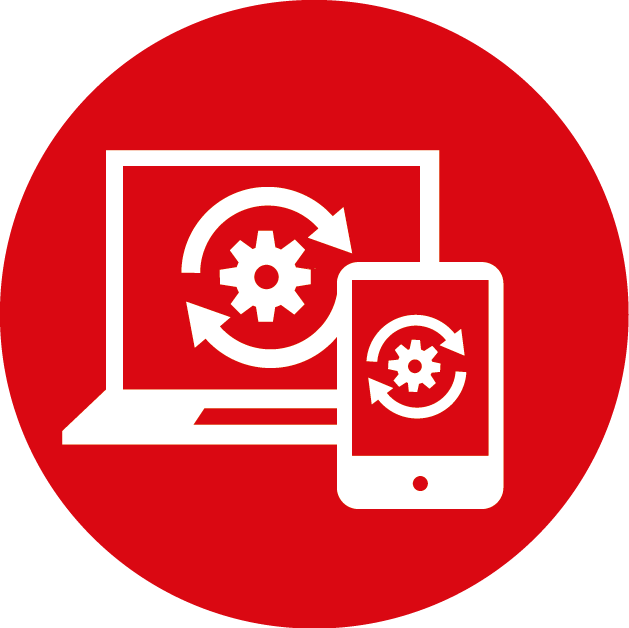Deployment at the touch of a button
Continuous delivery (CD) is a software strategy that enables companies to deliver new features to users as quickly and efficiently as possible.
The interaction of roles, processes and tools accelerates the supply chain from software development to operation.
Continuous delivery allows you to shorten the throughput time of the entire IT value chain. This goal can be achieved with the help of a continuous delivery pipeline, an integrated processes for building, testing and delivering software.
- Strengthen competitiveness and innovation through short release cycles
- Greater transparency through documented processes and live monitoring
- High quality and stability through automation
- Ensure performance quality and the user experience through consistent environments
- Efficient cooperation between Development and Operations
Continuous delivery – the benefits for you
Great features through short release cycles

Higher quality through automation
Greater reliability through consistent environments
Great features through short release cyclesn
By automating the deployment, a new version of the software can be rolled out as often as desired, even fully automatically. The development team can test and optimise new features faster and more frequently. This not only allows resources to be used more efficiently, but also strengthens the company’s competitiveness and innovative power.
Higher quality through automation
Simpler rollout of new software leads to shorter release cycles and more updates. This reduces the number of changes per rollout and thus lowers the complexity of an update. Lower complexity and fewer manual processes automatically mean fewer errors. What’s more, the capacity freed up through process automation can be used for identifying and eliminating errors.
Greater reliability through consistent environments
Automation creates replicability, whereby environments can be kept identical and also tested for differences. This can prevent unpleasant surprises such as “but it worked for me locally”. The continuous delivery pipeline involves the use of version control and standardisation of delivery processes, which minimises the risk of errors. A new or updated feature passes through several stages in a CD pipeline, typically development, testing and operation. The degree of automation within and between the stages depends on the DevOps methods and tools used. The use of container technologies plays a particularly important role. The most important differences at a glance:
Without continuous delivery pipeline:
Classic deployment according to ITIL with primarily manual processes based on non-identical environments.

Classic continuous delivery pipeline:
Simply using a classic CD pipeline can provide benefits like shorter release cycles, risk minimisation and greater transparency. However, deployment and testing are difficult due to the different topologies, parameters and software versions. In addition, local developments are not suitable for the testing and production environment (scaling, performance, security).

Container-based continuous delivery pipeline:
Container technologies solve the problems encountered with a classic CD pipeline as they are platform-independent and stateless. This enables simple deployment with isolated containers despite different environments. The container-based CD pipeline enables fully automated rollouts/rollbacks and testing of new applications and features.

Our services at a glance
Place your trust in our accumulated experience in designing, implementing and operating a continuous delivery pipeline in classic or container-based form with the following services:
- Workshop for analysing and defining the deployment strategy, customer-specific steps and workflows, success criteria and rollback measures
- Definition of the DevOps tools used
- Modelling of the deployment workflow including all relevant and agreed interfaces
- Implementation of the pipeline in codified form
- Provision and operation of the CD platform
- Monitoring of the deployment jobs and pipeline
Claranet also uses ITIL best practices to support DevOps mechanisms. This leads to a further improvement in service quality and a sustainable increase in your productivity.









